Prototypes
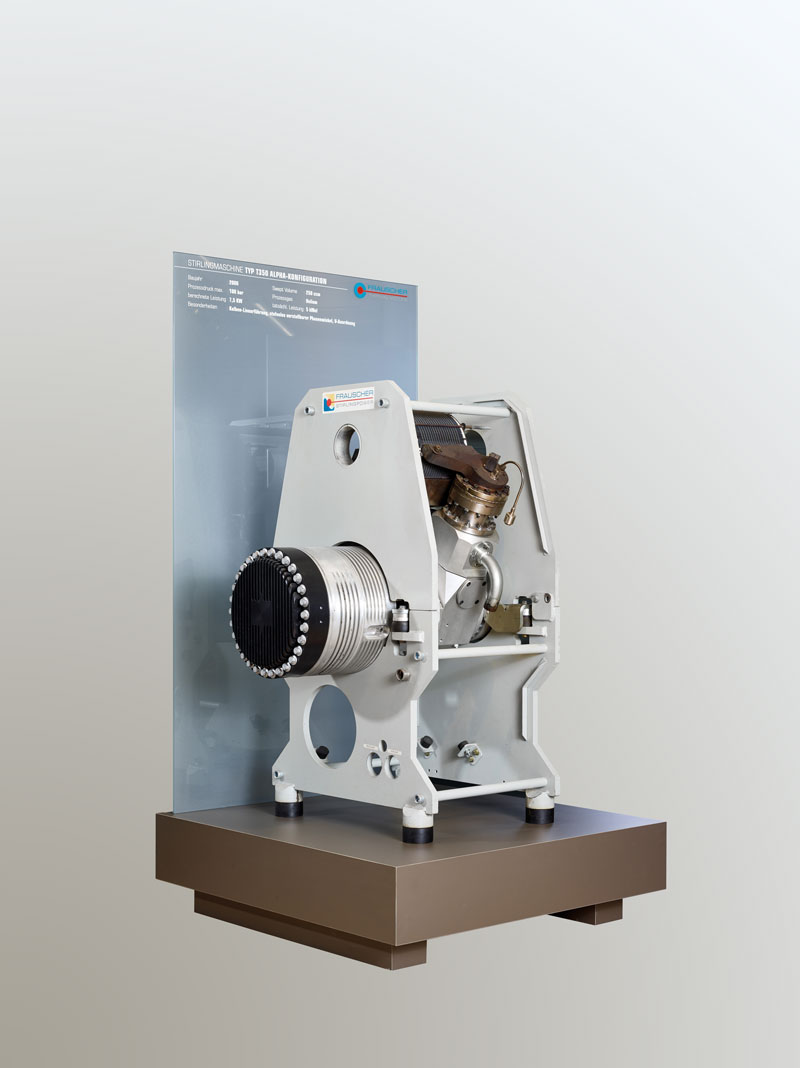
Stirling engine T350 Alpha configuration
Year built 2006
Max. process press. 100 bar
Calculated output 7,5 KW
Swept volume 250 ccm
Process gas Helium
Actual output 5 kWel
Special features Piston linear guide,
infinitely adjustable phase angle, V-arrangement
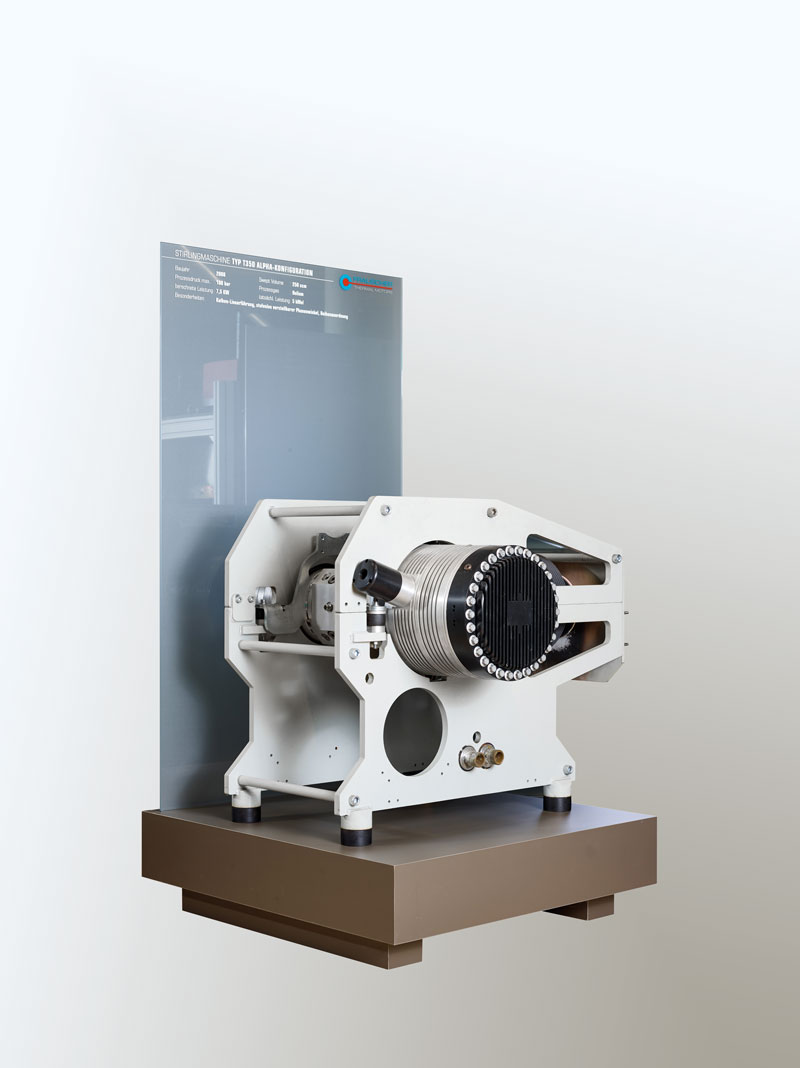
Stirling engine Type T350 Alpha configuration 2008
Year built 2008
Swept volume 250 ccm
Process gas Helium
Max. process press. 100 bar
Calculated output 7,5 KW
Actual output 5 kWel
Special features Piston linear guide,
infinitely adjustable phase angle,
in-line arrangement
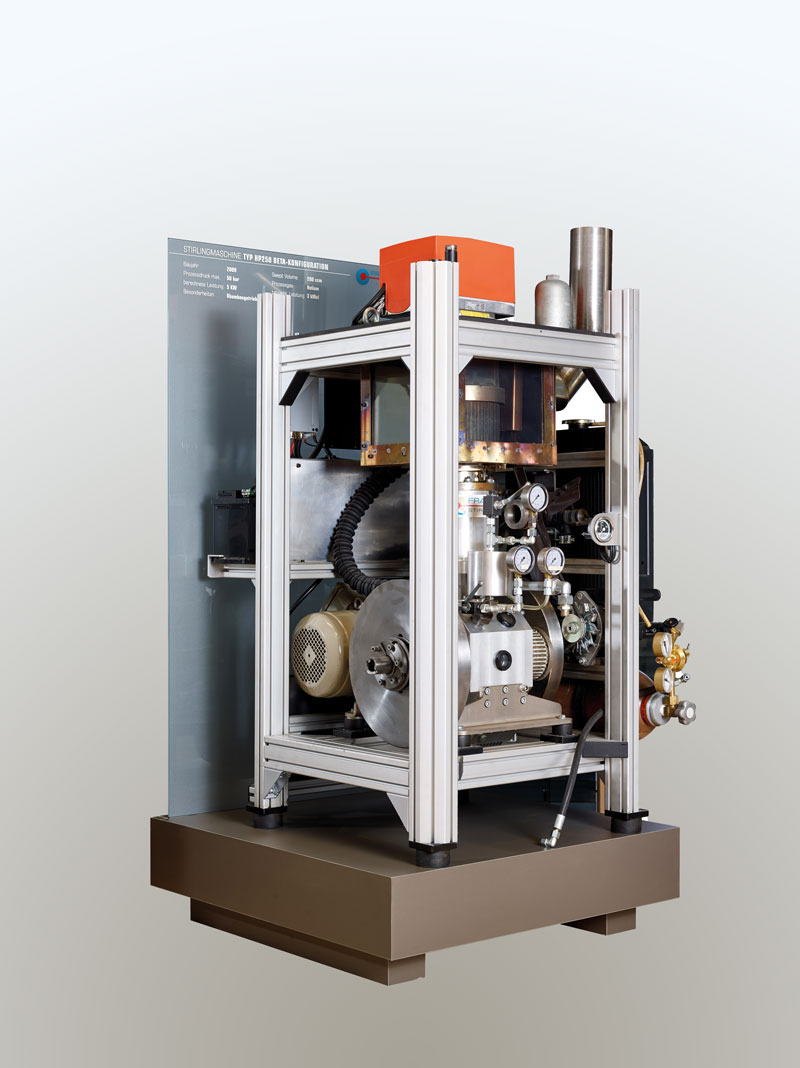
Stirling engine Type HP250 Beta configuration 2009
Year built 2009
Swept volume 200 ccm
Process gas Helium
Max. process press. 50 bar
Calculated output 5 KW
Actual output 3 kWel
Special features Rhombic drive,
oil lubricated
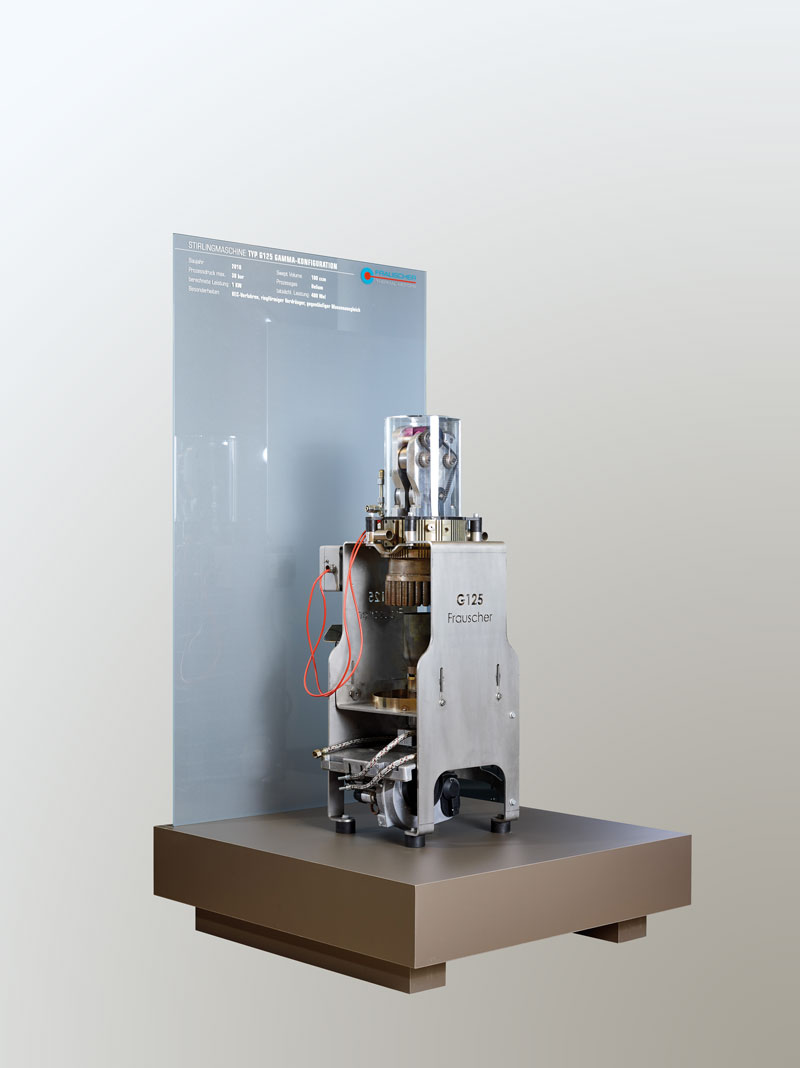
Stirling engine Type G125 Gamma configuration 2010
Year built 2010
Swept volume 100 ccm
Process gas Helium
Max. process press. 30 bar
Calculated output 1 KW
Actual output 400 Wel
Special features HEC process,
annular displacer, inverse mass balance
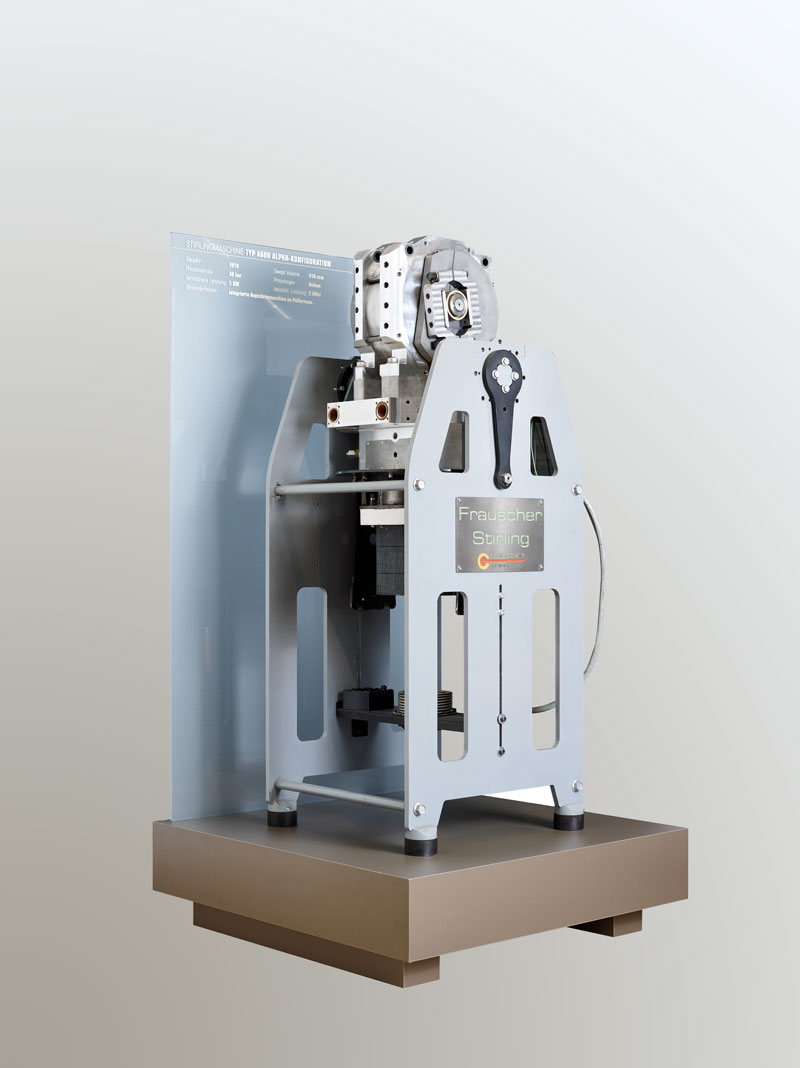
Stirling engine Type A600 Alpha configuration 2010
Year built 2010
Swept volume 510 ccm
Process gas Helium
Process pressure 30 bar
Calculated output 5 KW
Actual output 5 kWel
Special features Integrated asynchronous motor in the buffer space
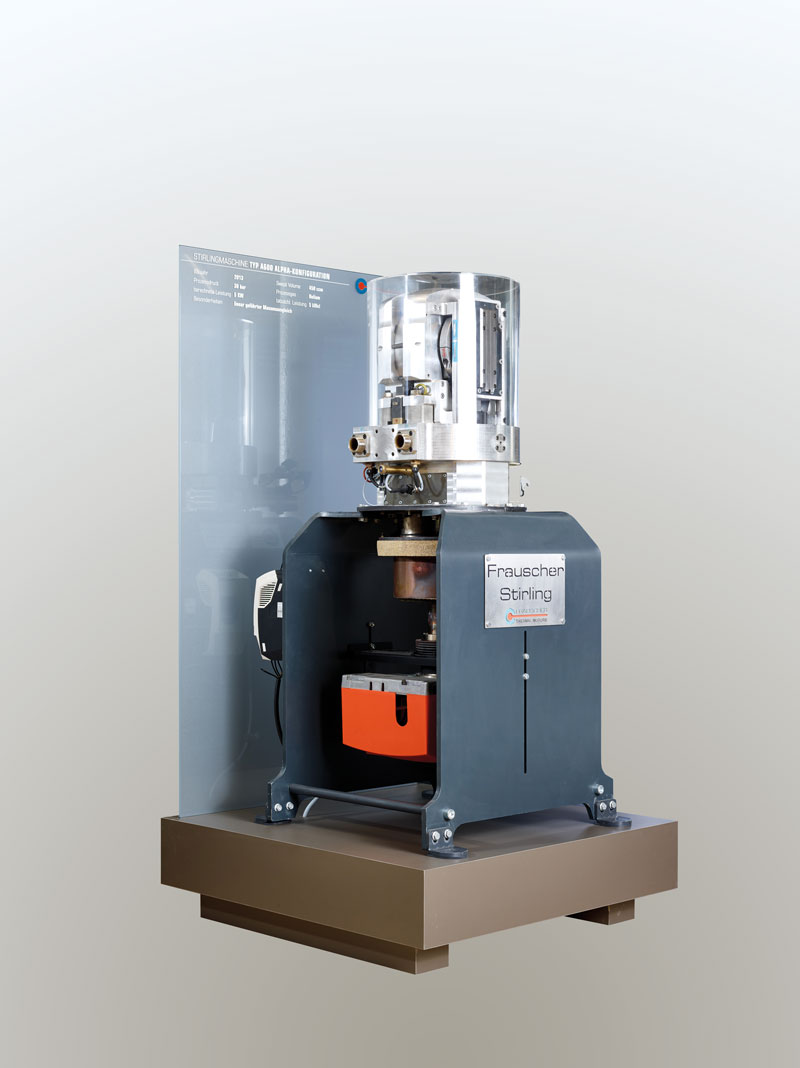
Stirling engine Type A600 Alpha configuration 2013
Year built 2013
Swept volume 450 ccm
Process gas Helium
Process pressure 30 bar
Calculated output 5 KW
Actual output 5 kWel
Special features Linearly guided mass balance
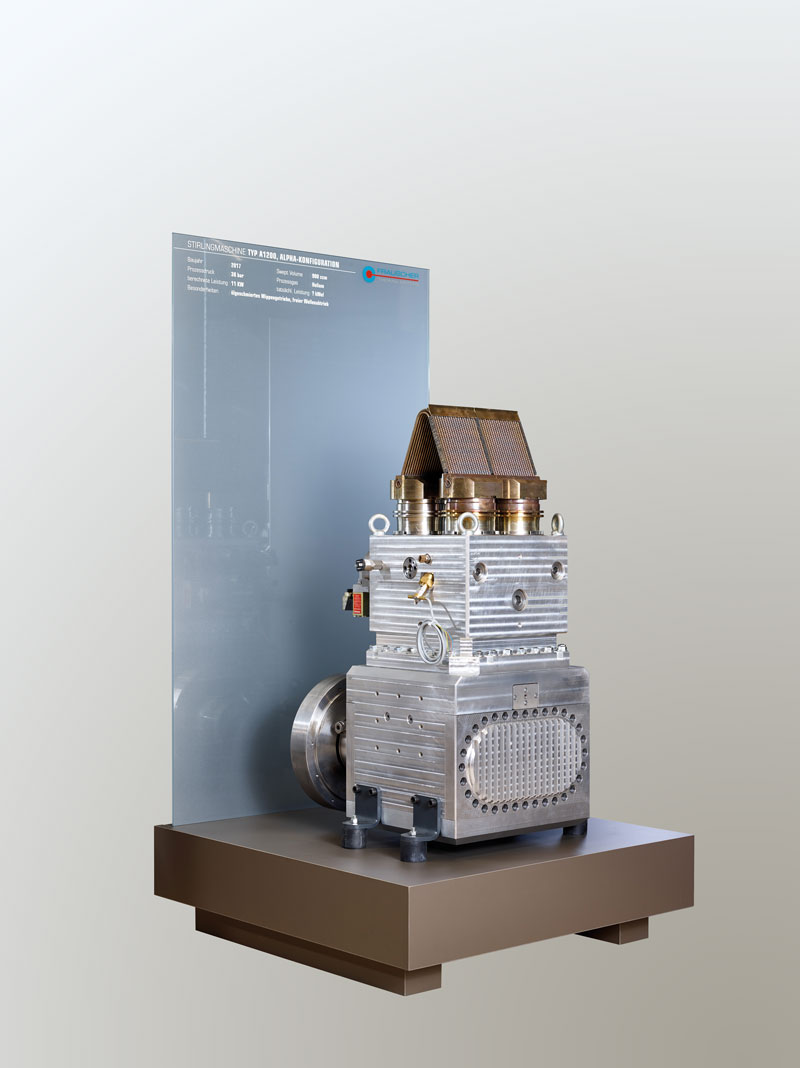
Stirling engine Type A1200 Alpha configuration 2017
Year built 2017
Swept volume 900 ccm
Process gas Helium
Process pressure 30 bar
Calculated output 11 KW
Actual output ? kWel
Special features Oil lubricated rotary shaft seal, external generator
The better is the enemy of good…
The successes after 11 years of intensive research work were manageable. Although the A600 machine turned out to be useful in various project applications at the end of the period under review, we decided to implement the alphagamma® principle invented in 2017 and to analyse it extensively in practical use. A good decision, as we can see in retrospect.
